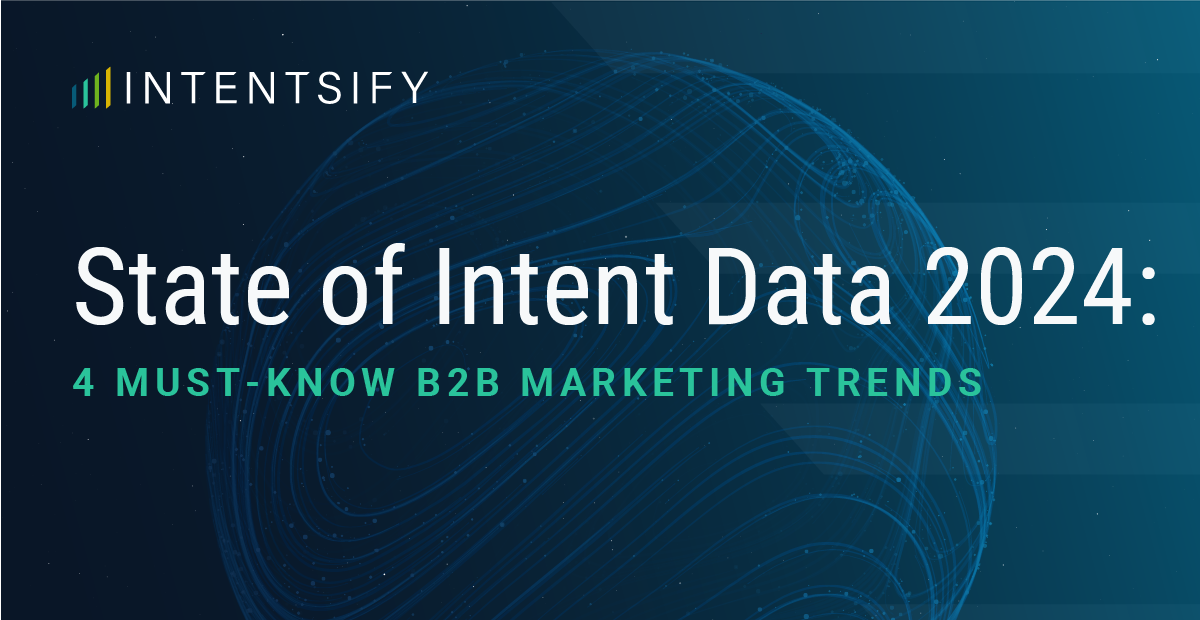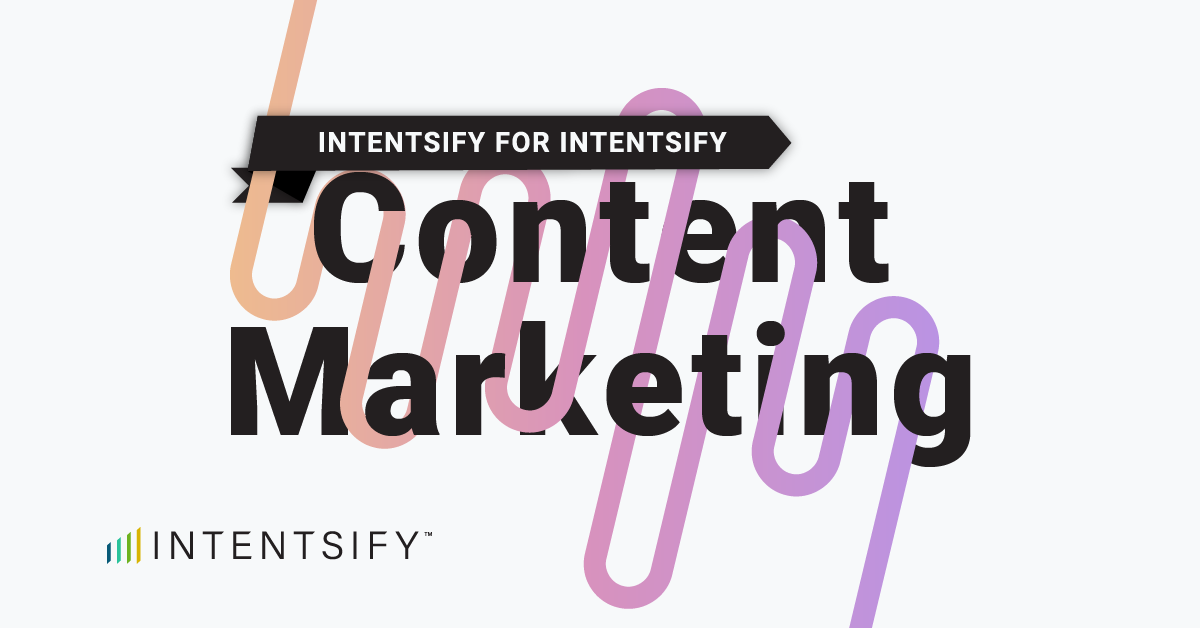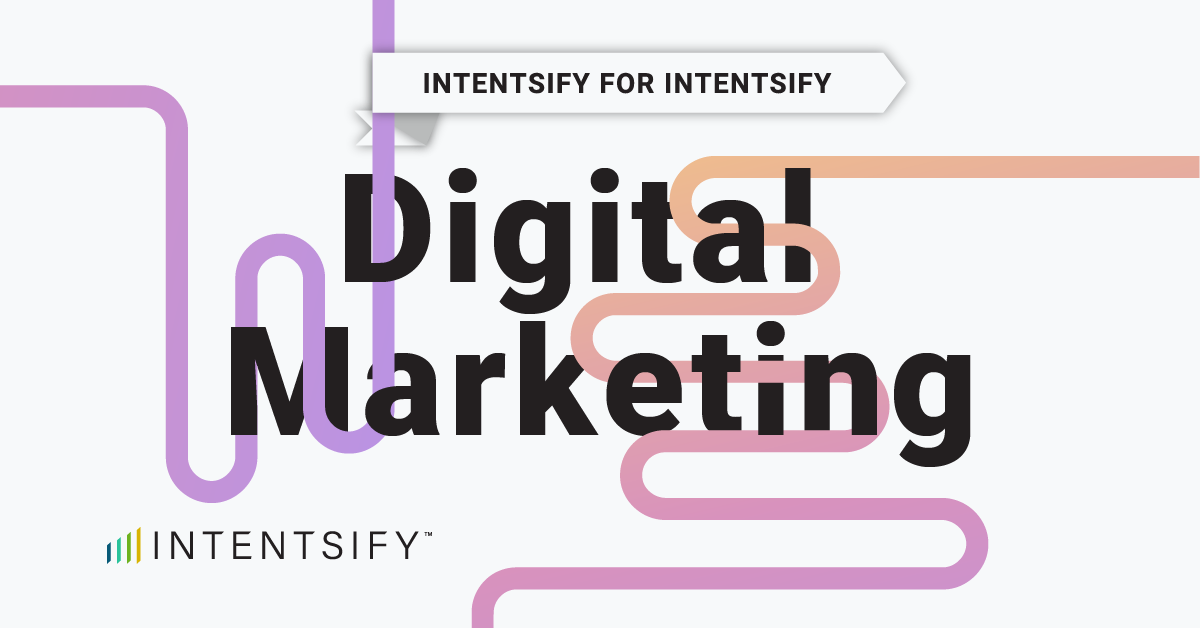Intent data has become a cornerstone of modern account-based marketing (ABM). It allows your teams to go beyond firm demographics, and engage buyers where they’re at right now based on their behavior.
By revealing which accounts are actively researching solutions that are similar to yours, intent data lets you prioritize high-value targets. This puts you a step ahead of your competitors when it comes to tailoring your messaging and reaching the right decision-makers at the right moment.
In this article based on our recent ebook, Why B2B Revenue Teams Need Buying Group Intent, we’ll explain how to use intent data to accelerate B2B sales in your organization, from smarter lead generation to churn prevention.
1. Prioritize High-Value Accounts with Strong Buyer Intent
One of the most important parts of a successful strategy is building the right target-account list (TAL). Unfortunately, many organizations make the mistake of limiting their focus to organizations that have shown interest in the past, which does not necessarily reflect current buying intent.
Figuring out how to use intent data lets you find and prioritize high-value accounts with strong buyer intent by showing you which organizations are researching solutions related to your offering. This means you can figure out which accounts are signaling purchase intent instead of guessing who might be ready to buy.
By shifting your strategy from ‘guess and spray’ to ‘focus and convert,’ you can hone in on the best accounts to direct your marketing and sales attention.
2. Reveal the Real Decision-Makers Behind Every Account
Modern B2B purchase decisions aren’t made by a single person. They involve multiple stakeholders — known as buying groups — who are responsible for making financial decisions.
The average buying group is actually made up of 11 individuals representing numerous roles, according to research by Gartner.
Buying Group Intent data gives you enhanced visibility into these buying groups by showing you which personas within a company are researching content related to your business. By tracking engagement across various departments and roles, you gain a clearer understanding of the key stakeholders and decision-makers involved in the buying process.
3. Target Leads That Show Real Buying Activity
Many organizations try to cast a wide net designed to reach as many potential customers as possible to increase their chances of converting. Unfortunately, this often means they simply end up wasting valuable time and resources on cold outreach to uninterested prospects.
Learning how to use intent data effectively helps to solve this issue, as it means you can track behavioral signals. Then you can figure out which accounts actually have in-market buying groups, and who is in them.
Once you have this data, you can refine your marketing campaigns to engage potential leads before your competitors even know they’re looking.
4. Engage the Right Personas with Tailored Messaging
Understanding exactly which personas are most interested in your solutions provides you with critical insights into the composition of your buying groups. This means you can frequently reassess your messaging and adapt it as needed.
Intent data enables you to move away from broad, untargeted awareness campaigns, and towards delivering highly relevant ads that speak directly to your audience’s priorities and pain points.
By focusing your efforts on high-intent personas, you can optimize your ad spend, reduce acquisition costs, and ultimately boost your ROI.
5. Match Your Messaging to Buyer Intent
Higher quality leads only matter if you can eventually turn them into closed deals. However, understanding your buying group’s intent can be more difficult than it initially seems — situations can change quickly, and just because a buying group showed strong intent a couple of weeks ago, it doesn’t mean that this is still the case.
Using intent data enhances your sales strategies by providing you with a clear picture of which topics each persona is interested in right now, and what research stage they’re currently at within each topic.
This means you can reprioritize your efforts as needed, and customize your sales outreach to include the right messaging and content for each account.
6. Find Out When You’re Being Compared to a Competitor
Your prospects are always on the lookout for a better deal, so it’s important to keep an eye on competitors within your industry — after all, they’re certainly watching you.
Intent data can show you which competitors you’re likely being compared to within each buying group. It can also give you valuable information about when your prospects are researching competitors, and help you uncover trends across industries that you might not have noticed.
This information allows you to evaluate how your offering compares to each competitor’s, so you can craft your messaging to directly address their strengths and weaknesses to appeal to potential buyers who may be on the fence.
7. Retain More Customers and Uncover Cross-Selling Opportunities
Many organizations miss out on opportunities by overlooking the potential of intent data after making a sale. By monitoring key personas who are researching solutions you offer, you can uncover new cross-sell opportunities and tailor your pitch to approach the right people at the right time.
Analyzing intent data can also help you identify churn risk. For example, if a current customer starts searching for alternatives to your product, it may be a signal that they are dissatisfied with your service.
This insight gives you the opportunity to internally flag the account for review, or to reach out to offer additional support to address any issues before it’s too late.
How to Use Intent Data in 2025
B2B marketing and sales tactics are constantly evolving, but figuring out how to use intent data properly can help you align your strategies with buyer signals in real-time, so you can engage the right accounts at the right time.
This means you can close deals faster, so you can drive across your organization and ultimately stay ahead of your competitors.
To find out more about how to use intent data in 2025, you can download our comprehensive ebook: Why B2B Revenue Teams Need Buying Group Intent.






